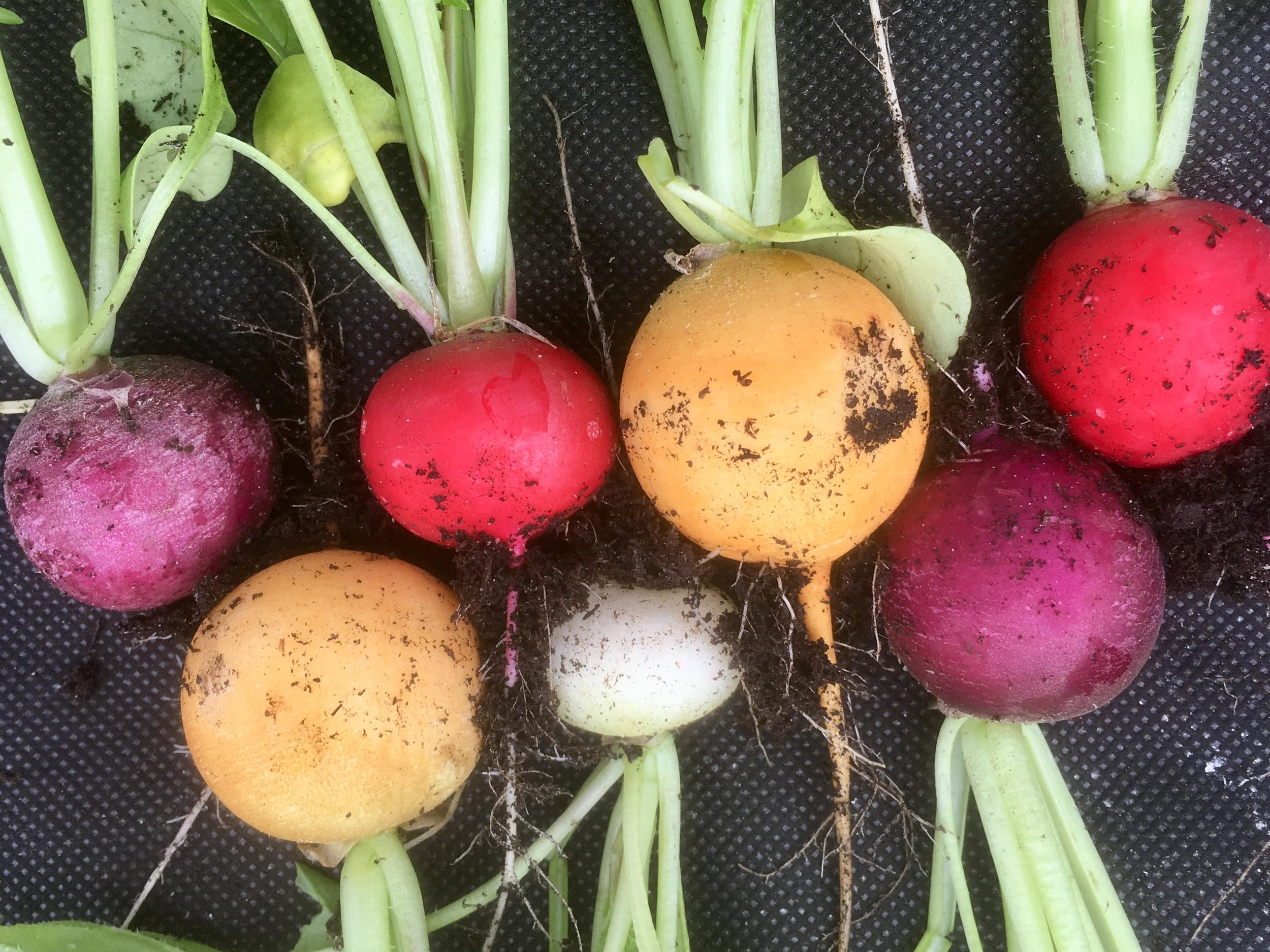Get Spring-fit with Radishes! Discover flavour series 1: Sharp
The radish (Raphanus sativus) which “occupies a far more exalted position in Oriental cultures” (Joy Larkcom) than in European food circles seems to make a comeback this year. "We are starting to see radish appetizers, roasted radishes and other musings with the vegetable on menus", says Andrew Freeman, president of restaurant consulting firm AF&Co.
Radishes are super healthy
Radishes are a secret weapon against bad bacteria and funguses in our guts They contain natural isothiocyanates, such as mustard oils, which help to protect our digestive system and are also responsible for the sharp, pungent, peppery flavour, ranging from mild in the case of white-icicles to very hot in red globe and other pigmented varieties.
Radishes are extremely powerful when it comes to the nutritional benefits. Loaded with the important minerals potassium, calcium and iron they are full of vitamins A, B1, B2 and 100 g can provide 25% of the daily recommended intake of Vitamin C. Radishes contain mostly water (94%) and therefore 100 g contain only 15 calories, which makes them an ideal food for slimming diets.
Radishes are easy to grow
Radishes are one of the first vegetables to harvest fresh in April even grown in a pot on a balcony in a city flat. For a continuous, nearly all year round supply of those delicious ‘sharp devils’ sow every 2 to 3 weeks from March to September, 1cm deep every 5 cm in rows of 10cm apart, or else broadcast. The seeds will germinate in a few days and plants love temperatures of 12-15° C in a sunny spot. In early Spring you can cover with a light fabric or vlies if it gets too cold at night. Most important: Keep the soil moist as lack of water makes them too sharp and sometimes hollow. You should be able to harvest 4-6 weeks after sowing. Radishes are easy to grow, which makes them an ideal crop to try with children and they rarely suffer from pests and diseases.
Radishes for all seasons
Radishes come in numerous varieties, varying in size, shape, colour and crop duration. Categorized into Spring/Summer and Winter radishes, they are ALSO often classified as red, black or white. Popular varieties are Cherry Bell, Long White Icicle, French Breakfast and China Rose. My personal favourites are Autumn/Winter maturing Mooli varieties like Daikon or Neptune. Mooli radishes are crisp, pure white 25cm long roots and mild in flavour. If you want to try something extraordinary grow Munchen Bier radish, which are grown for their very spicy seed pods. The tops can be eaten as leafy-greens.
Radish, Orange and Walnut Salad, recipe by Gaby Wieland
Ingredients:
1 bunch of radishes, washed, trimmed and finely sliced
2 tbsp olive oil
1 tbsp white wine or white balsamic vinegar
2 organic oranges, peeled and sliced
30 g walnuts, chopped coarsely
2 garlic cloves, minced
1 tbsp sesame seeds
1-2 tsp agave or apple syrup
Sea salt and freshly ground pepper to taste
parsley, finely chopped
Method:
1. Mix all the ingredients well together.
2. Serve with a sprinkle of chopped parsley.


